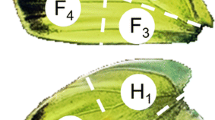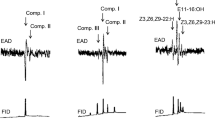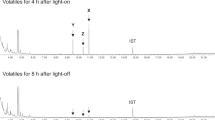Summary.
The biosynthetic pathway of the formation of males'marking pheromones of two bumblebee species, Bombus lucorum and B. lapidarius, was studied for the first time. After applications of deuterium labelled palmitic acid ([2H31]-hexadecanoic acid) into either the head capsules or abdomens the corresponding deuterium labelled pheromone components were detected in the labial gland (LG) extracts of males of both species. In B. lucorum, ethyl [2H29]-hexadec-9-enoate and ethyl [2H31]-hexadecanoate were identified. No deuterium-labelled ethyl tetradecenoate, that would correspond to shortening of the carbon chain, was detected. In B. B. lapidarius, [2H31]-hexadecan-1-ol and [2H29]-hexadec-9-en-1-ol were found in the LG. Furthermore, the deuterium labelled precursor was incorporated into triacylglycerols (TAG) of the fat bodies of males. In vitro incubation of the labial glands of B. lucorum males with deuterium-and 13C-labelled palmitic acid lead to the formation of saturated ethyl esters only.
Similar content being viewed by others
Author information
Authors and Affiliations
Additional information
Received 25 July 2002; accepted 13 January 2003.
R1D=""
Correspondence to: Irena Valterová, e-mail: irena@uochb.cas.cz
Rights and permissions
About this article
Cite this article
Luxová, A., Valterová, I., Stránský, K. et al. Biosynthetic studies on marking pheromones of bumblebee males. Chemoecology 13, 81–87 (2003). https://doi.org/10.1007/s00049-003-0230-8
Issue Date:
DOI: https://doi.org/10.1007/s00049-003-0230-8




